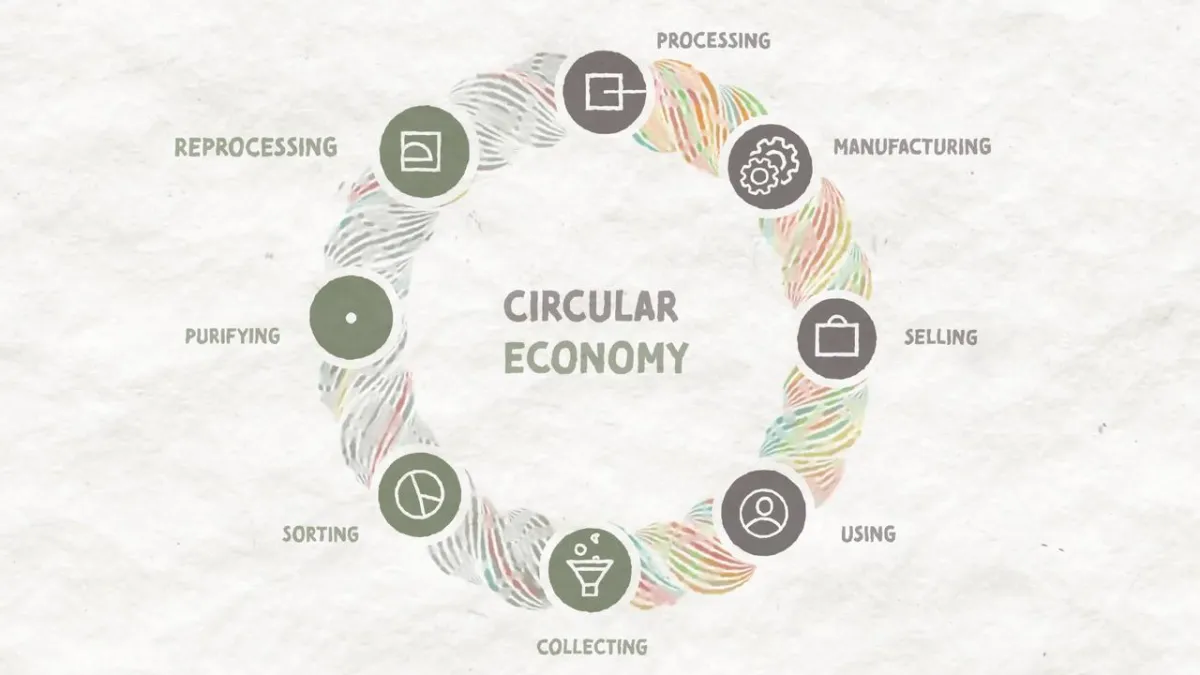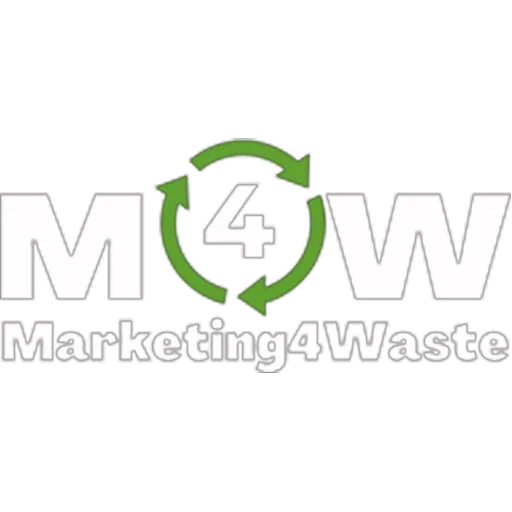Increase the Revenues of Your Waste Company With the Tips Shared in Our Blog Articles

Unlocking the Future of Waste Management: Embracing the Circular Economy Model
Greetings, fellow waste management innovators! Today I want to guide you through the transformative journey of adopting the Circular Economy model.
If you're a waste management company owner aged between 25 and 55, this article is your blueprint for aligning with new federal regulations and unlocking unparalleled business opportunities.
Why the Circular Economy?
The United States has recently rolled out comprehensive federal waste regulations to tackle our growing waste crisis. These regulations are not just mandates; they are a call to innovate, adapt, and lead. The Circular Economy model is your key to thriving in this new landscape. Here's why:
1. Regulatory Alignment and Compliance
Navigating the maze of new regulations can be daunting. However, the Circular Economy model inherently aligns with these directives:
- Enhanced Recycling Requirements: The Circular Economy prioritizes recycling and reuse, ensuring your operations are in full compliance with mandatory recycling programs and standardized guidelines.
- Reduction of Single-Use Plastics: By focusing on reusable and biodegradable materials, you can seamlessly integrate with regulations banning certain single-use plastics.
- Extended Producer Responsibility (EPR): This model naturally supports EPR by encouraging sustainable product design and making manufacturers accountable for the end-of-life management of their products.
2. Economic and Environmental Benefits
Adopting the Circular Economy model isn't just about meeting regulations; it's about unlocking economic and environmental advantages that can propel your business forward:
- Cost Savings: Efficient recycling processes reduce disposal costs and lower the need for raw materials, directly boosting your bottom line.
- New Revenue Streams: The sale of recycled materials and innovative waste management services can create additional income sources.
- Environmental Stewardship: Reducing waste and promoting material reuse significantly decreases your environmental footprint, enhancing your company's reputation and appeal to eco-conscious clients.
3. Innovation and Competitive Advantage
In the fiercely competitive waste management industry, innovation is your ticket to standing out:
- Advanced Technologies: Embrace cutting-edge waste-to-energy solutions and innovative recycling techniques to offer superior services.
- Customer Engagement: Clients today are looking for partners who can help them achieve their sustainability goals. By adopting the Circular Economy model, you position your company as a leader in sustainability, attracting and retaining valuable clients.
- Regulatory Incentives: Early adoption of sustainable practices may qualify you for government incentives, providing financial benefits and reinforcing your competitive edge.
Charting the Path Forward
As we move towards a more sustainable future, the Circular Economy model is not just an option; it’s a necessity. Here’s how to get started:
1. Evaluate Your Current Practices: Conduct a thorough audit of your waste management processes. Identify areas where recycling and reuse can be enhanced.
2. Invest in Technology: Look into waste-to-energy technologies and other innovative solutions that align with Circular Economy principles.
3. Engage with Stakeholders: Educate your clients and partners about the benefits of the Circular Economy. Collaboration is key to driving collective change.
4. Stay Informed: Keep abreast of regulatory changes and industry trends. Adaptability is crucial in this evolving landscape.
Understanding Circularity: The Principle of Conservation of Mass
To truly grasp the essence of the Circular Economy, we must delve into the concept of circularity, which is fundamentally rooted in the principle of the conservation of mass. Antoine Lavoisier, the father of modern chemistry, articulated this principle, stating that mass is neither created nor destroyed in a chemical reaction. Instead, mass is conserved and merely changes forms.
In the context of waste management, this principle translates to the idea that materials and resources do not simply vanish once discarded; they persist in the environment in different forms. The Circular Economy leverages this understanding by keeping materials in use for as long as possible, extracting maximum value before recovering and regenerating products and materials at the end of their service life.
Extending Product Lifecycles
One of the core tenets of the Circular Economy is extending the lifecycle of products. By designing products that are durable, repairable, and upgradeable, we can keep them in use longer, thus extracting more value from the same amount of raw material. This approach not only reduces the volume of waste but also minimizes the need for new resources, adhering to Lavoisier's principle by continuously repurposing the material mass within the system.
Designing for Disassembly
Another critical aspect of the Circular Economy is designing products for disassembly. This means creating products in such a way that their components can be easily separated and reused or recycled at the end of their life. This strategy ensures that the material mass is conserved and redirected back into the production cycle, rather than being lost as waste.
Maximizing Resource Efficiency
Resource efficiency is at the heart of the Circular Economy. By optimizing the use of materials and energy throughout the lifecycle of a product, we can significantly reduce waste generation. This includes everything from the design and manufacturing processes to consumption and disposal. Efficient resource use ensures that we maintain the balance of mass within the system, continually cycling materials rather than depleting natural resources.
Practical Steps for Waste Management Companies
As waste management company owners, you have a pivotal role in implementing the Circular Economy. Here are some practical steps to guide your transition:
1. Implement Comprehensive Recycling Programs
Establishing robust recycling programs is essential. This involves setting up systems to collect, sort, and process recyclable materials efficiently. By creating a seamless recycling infrastructure, you can ensure that materials are continuously cycled back into the production process.
2. Promote Reuse and Repair
Encourage clients to adopt practices that extend the life of their products. This could involve facilitating repair services or creating platforms for the resale of used items. By promoting reuse, you help reduce the demand for new products and the associated waste.
3. Invest in Advanced Sorting Technologies
Advanced sorting technologies, such as automated sorting systems and AI-driven waste recognition, can significantly enhance the efficiency of recycling processes. These technologies ensure that materials are accurately sorted and directed towards the appropriate recycling streams, maximizing the recovery of valuable resources.
4. Develop Waste-to-Energy Solutions
Exploring waste-to-energy solutions is another way to embrace the Circular Economy. Technologies such as anaerobic digestion and gasification can convert waste materials into energy, providing a valuable resource while reducing landfill dependency. These solutions align with the principle of conserving mass by transforming waste into usable energy.
5. Collaborate with Manufacturers
Collaboration with product manufacturers is crucial. By working together, waste management companies and manufacturers can design products that are easier to recycle and disassemble. This collaboration ensures that the principles of the Circular Economy are embedded from the very beginning of the product lifecycle.
Case Studies: Success Stories in Circular Waste Management
Case Study 1: Interface
Interface, a global carpet tile manufacturer, has successfully implemented the Circular Economy model through its "Mission Zero" initiative. The company focuses on designing modular carpet tiles that can be easily replaced, repaired, and recycled. By using recycled materials and creating take-back programs, Interface has minimized waste and reduced its reliance on virgin materials. This approach not only aligns with federal regulations but also demonstrates the economic viability of circular practices.
Case Study 2: Loop Industries
Loop Industries is revolutionizing the plastic recycling industry with its innovative technology that breaks down waste PET plastic into its base building blocks, which can then be reassembled into brand-new, virgin-quality PET plastic. This closed-loop process ensures that plastic waste is continuously recycled, drastically reducing the need for new plastic production and conserving material mass within the system.
Case Study 3: Veolia
Veolia, a global leader in optimized resource management, has embraced the Circular Economy by developing integrated waste management solutions. Veolia's approach includes advanced sorting facilities, waste-to-energy plants, and comprehensive recycling programs. Their efforts have resulted in significant reductions in waste sent to landfills and increased recovery of valuable resources.
Overcoming Challenges in the Transition
Transitioning to the Circular Economy model comes with its own set of challenges. However, with a proactive approach, these challenges can be effectively managed:
1. Initial Investment Costs
Adopting new technologies and establishing comprehensive recycling programs can require significant upfront investment. To mitigate this, consider seeking government grants and incentives designed to support businesses transitioning to circular practices. Additionally, the long-term cost savings and new revenue streams generated by efficient resource use can offset these initial expenses.
2. Changing Consumer Behavior
Educating clients and consumers about the benefits of the Circular Economy is crucial. Implement awareness campaigns and provide incentives for adopting circular practices. By demonstrating the economic and environmental advantages, you can encourage a shift in behavior towards more sustainable consumption patterns.
3. Regulatory Compliance
Staying informed about evolving regulations is essential. Regularly review federal and state guidelines to ensure your practices remain compliant. Engage with industry associations and participate in policy discussions to stay ahead of regulatory changes and influence future legislation.
The Road Ahead: Embracing Circularity in Waste Management
The Circular Economy model offers a transformative approach to waste management, emphasizing the continuous use and repurposing of materials. By aligning with the principle of conservation of mass, we can create a system where waste becomes a valuable resource, contributing to a more resilient and efficient economy.
As waste management professionals, you have the power to lead this transition. By implementing comprehensive recycling programs, promoting reuse and repair, investing in advanced technologies, and collaborating with manufacturers, you can unlock the full potential of the Circular Economy.
Together, we can turn waste into wealth and pave the way for a future where resources are conserved, value is maximized, and the impact on our environment is minimized. The journey towards circularity is not just a strategic business move; it is a commitment to a more sustainable and prosperous future for all.
Yours in innovation,
Sam Barrili
The Waste Management Alchemist


© 2024 Marketing4waste - All Rights Reserved,
Marketing4Waste is a brand of MiM MarketingInterimManagers LLC
+1 801 804 5730

